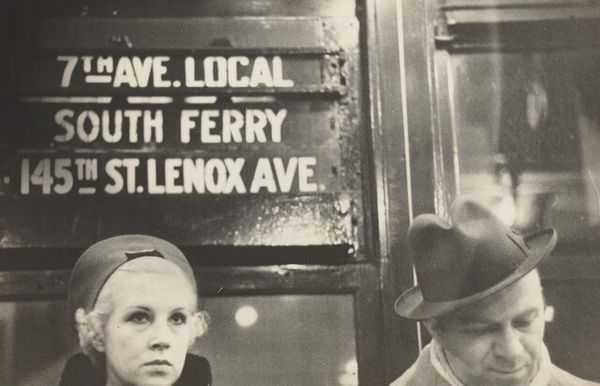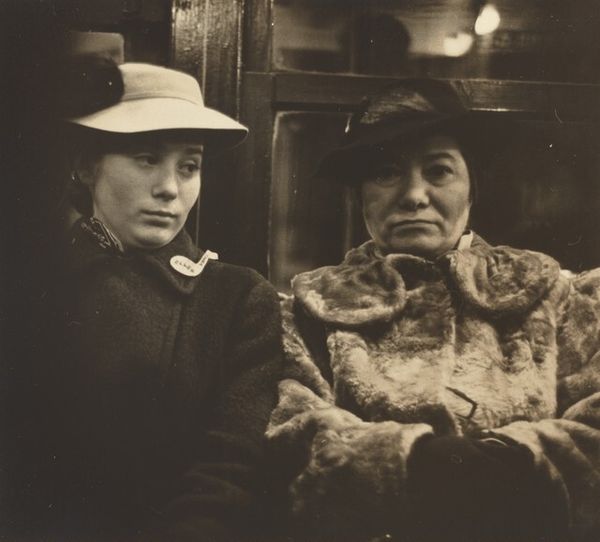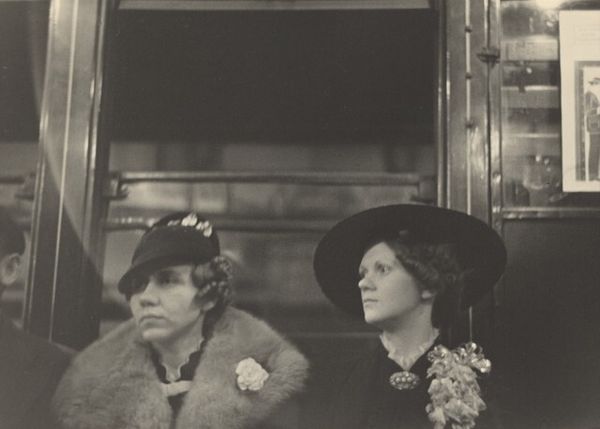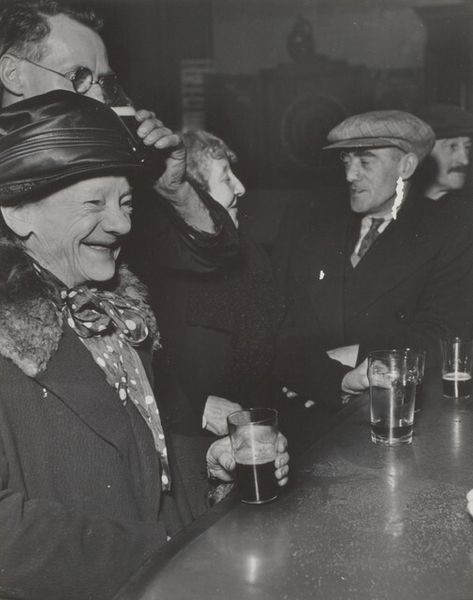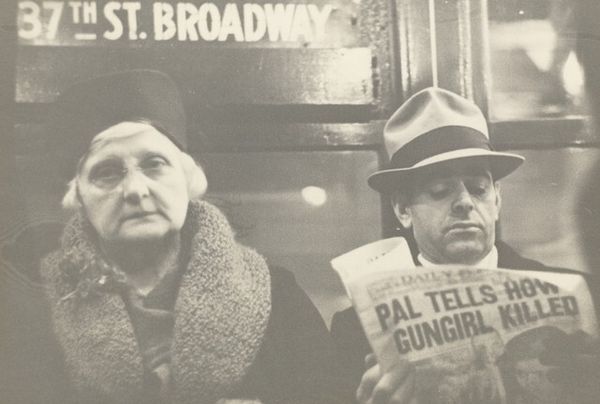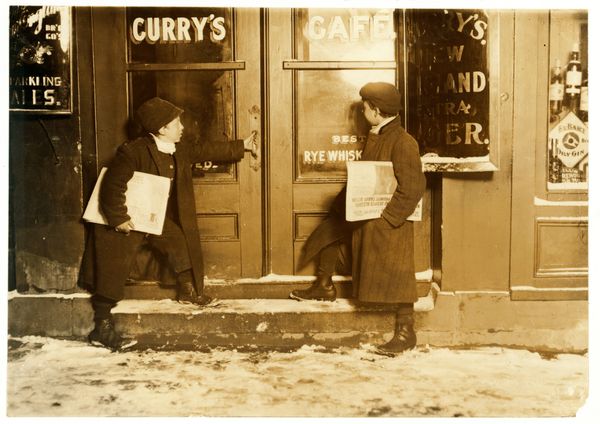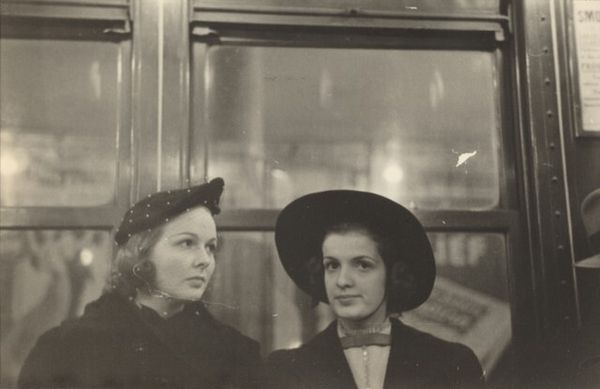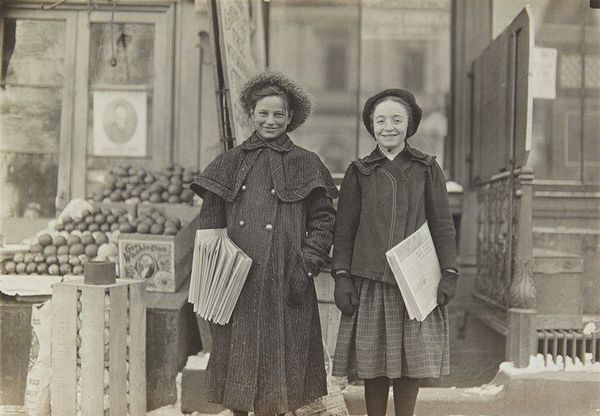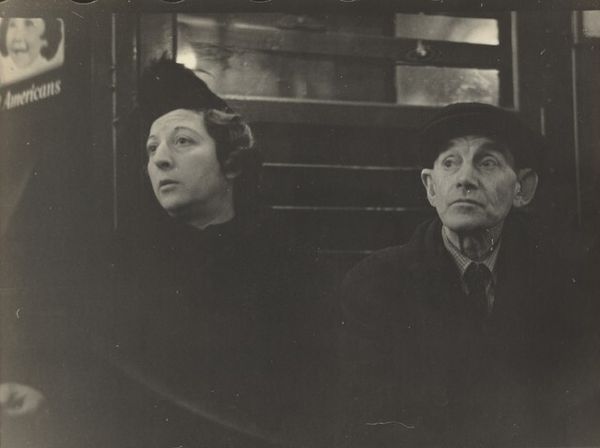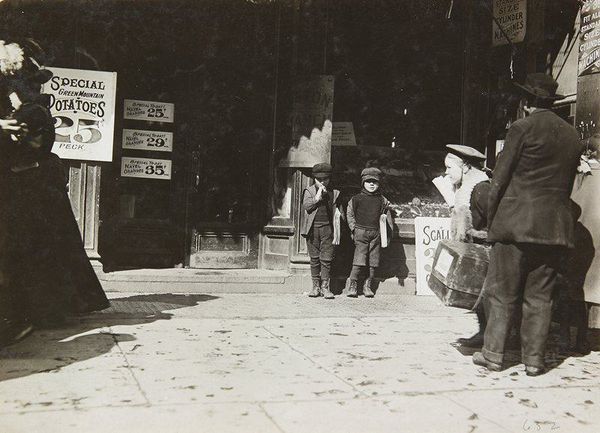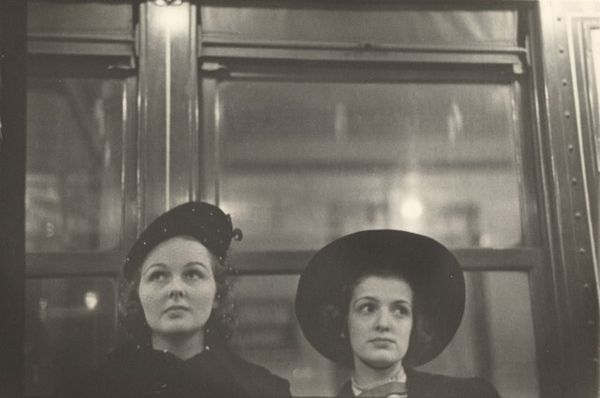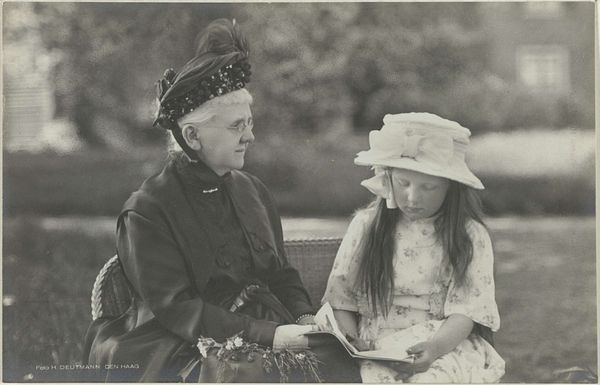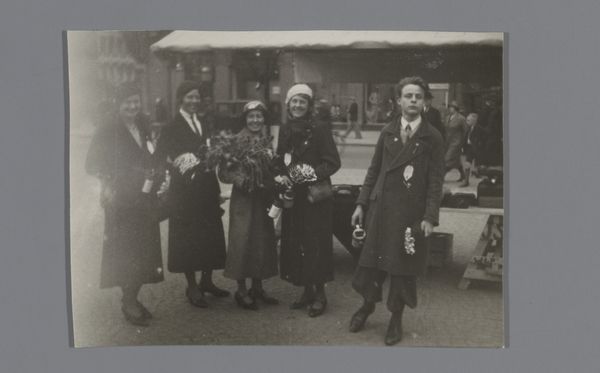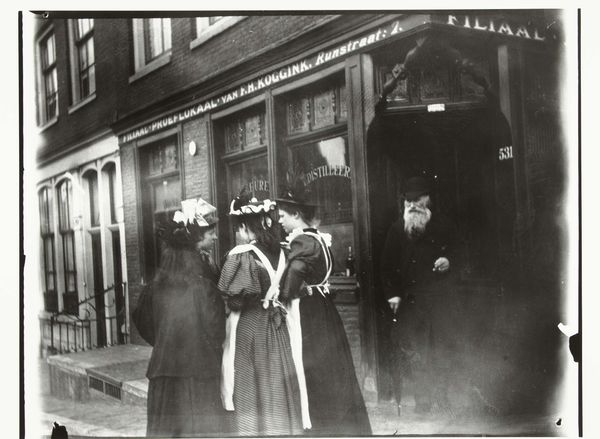
photography, gelatin-silver-print
#
portrait
#
street-photography
#
photography
#
historical photography
#
gelatin-silver-print
#
ashcan-school
#
cityscape
#
realism
Dimensions: sheet (trimmed to image): 16.3 x 22.1 cm (6 7/16 x 8 11/16 in.)
Copyright: National Gallery of Art: CC0 1.0
Curator: Walker Evans' "Subway Portrait," taken between 1938 and 1941, offers us an intimate look at New Yorkers during the pre-war era, captured using a hidden camera on the city's subway. Editor: My first thought is how tactile it feels despite being a photograph. You can almost feel the textures—the rough wool of the coats, the shine of the silver print itself, the slightly grubby surfaces of the subway car. Curator: Absolutely, and this work exists as an interesting social document too. Consider the furtive nature of capturing such images at the time, challenging notions of public and private space in an evolving urban landscape. This also reflects the influence of the Ashcan School that attempted to capture the undercurrents of city life at the turn of the century. Editor: Indeed, I’m also intrigued by the actual gelatin-silver print. The greyscale emphasizes not just forms and figures, but how light interacts with different materials – that subtle gleam on the South Ferry sign. Did this reflect how modern material life entered art at this time? Curator: Evans aimed to present an objective and unfiltered record of American life; although perhaps influenced by earlier documentary forms, this objectivity was of course constructed, both technically and conceptually. His images highlight both social divisions and common humanity within the context of rapid industrial change. Editor: It's about how that experience, filtered through materials, becomes fixed. The weight of lived experience is literally embedded in the print's material presence. And that’s what speaks to me, how the photo shows how working and commuting citizens had their moment captured in this space, even unconsciously, becoming part of his lasting legacy. Curator: Ultimately, Walker Evan’s photograph enables us to explore how representation mediates between the subject and the historical contexts within which it exists, thereby challenging conventions of portraiture by examining notions of documentary truth in the construction of cultural memory. Editor: And seeing those ordinary citizens immortalized reminds us that materiality also connects us through labor. In a way it dignifies their labor, as well as Evan's.
Comments
No comments
Be the first to comment and join the conversation on the ultimate creative platform.
